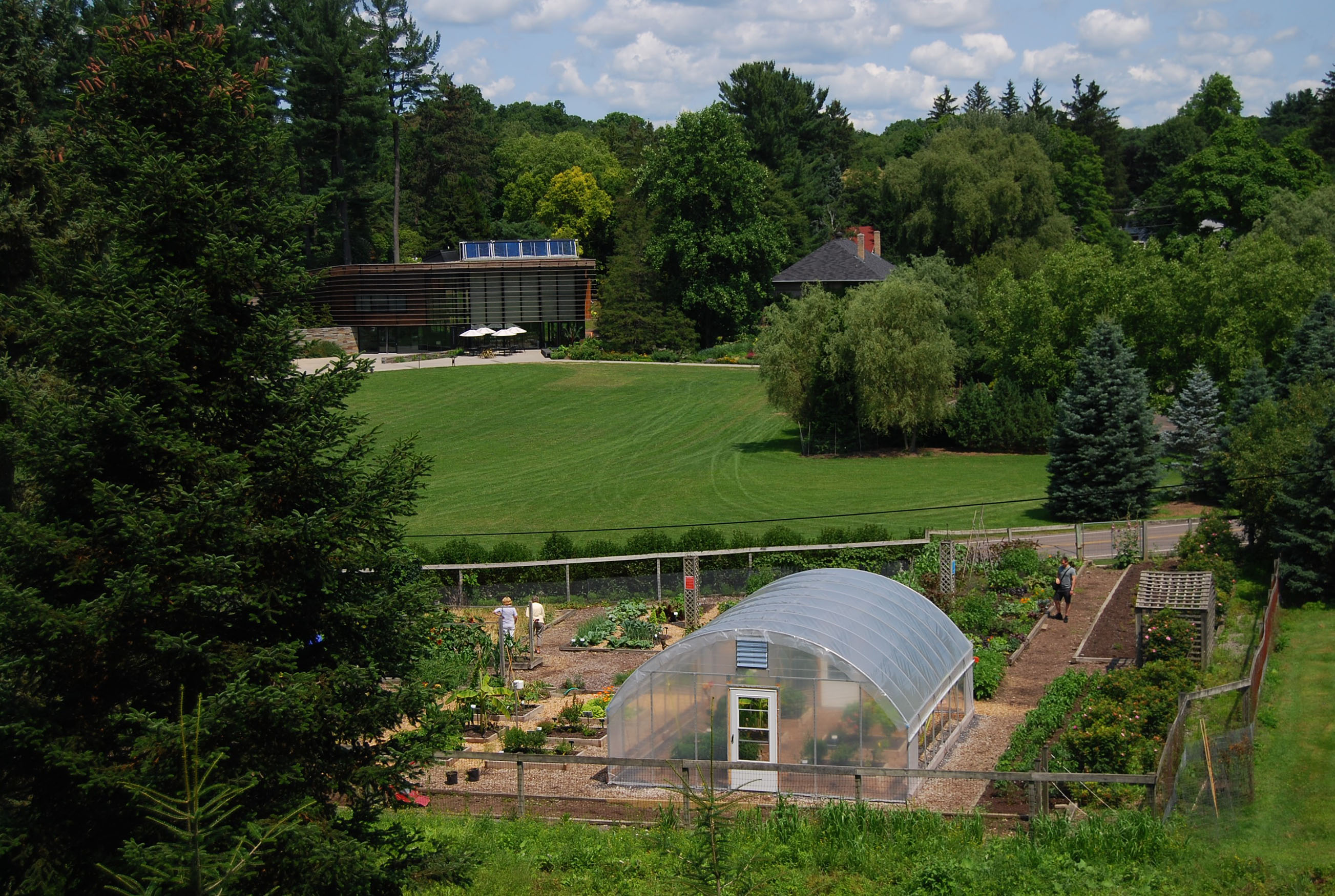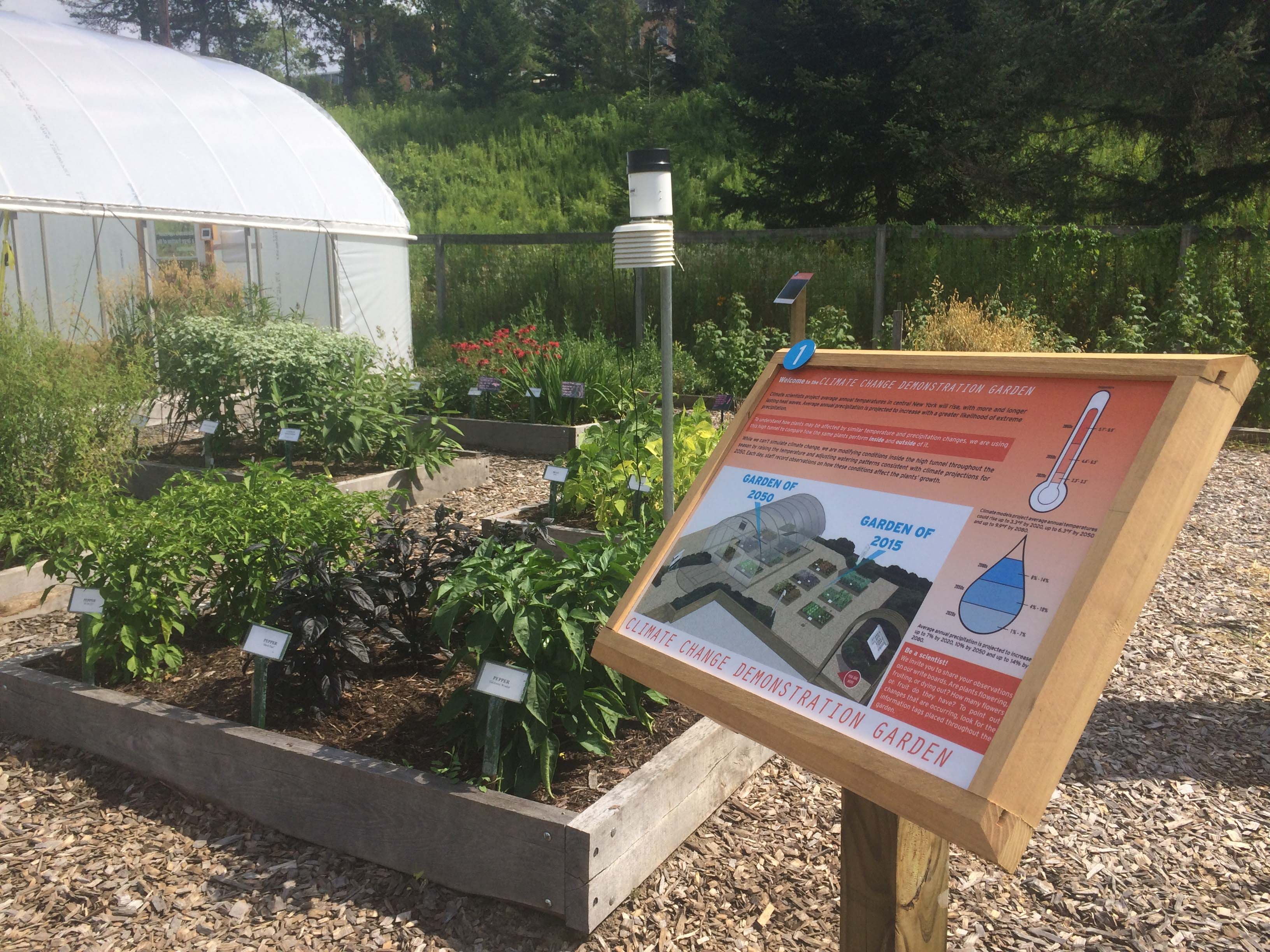![]()
Climate Change Garden
Sustainable Landscapes Trail at Cornell University
Climate change is a complex phenomenon that has both global and local implications. While visitors to a public garden may have a conceptual grasp of climate change, it is difficult to visualize potential impacts of climate change on our local environment. Just as public gardens have long been sources of knowledge and inspiration for what grows well in their region, they can also share information about what may be expected from plants with the onset of climate change. The Climate Change Garden is an ongoing project to display the effects of climate change on plants based on climate projections for 2050.
Return to Sustainable Landscape Trail Sites Homepage
Why is this site sustainable?
The goal of the Climate Change Garden is to provide visitors the opportunity to see and experience the possible impacts of changing temperature conditions associated with climate change on plants. While the project cannot simulate all aspects of climate change, the garden enables visitors to compare differences in plant response within the “Garden of Today” and the “Garden of 2050” based on changing temperature conditions.
The garden’s format and signage invite visitors to observe and consider relationships between climate and plant conditions, with the intent of increasing their awareness of possible climate impacts and encouraging them to think about possible actions they can take to mitigate and adapt to climate change.
The Climate Change Garden was designed to increase climate change awareness and encourage climate-adaptive behaviors and sustainable practices:
- Environmental control systems run entirely on solar power, reducing carbon footprint.
- Facility structure sourced locally, promoting local economy and reducing carbon footprint.
- Open source hardware and programming reduces social and economic barriers to replicating the facility and encourages future innovation.
- Complements the surrounding garden.” theme of demonstrating sustainable horticultural practices.
Design, Construction, Function, and Management

The Climate Change Garden consists of a high tunnel structure (a steel frame with clear plastic film stretched over it) with six planting beds inside and an identical set outside the tunnel. Species are selected based on how they express their relative susceptibility or resilience to changing temperature conditions. Plants inside the tunnel experience temperature conditions similar to those projected on average for the 2050s in our region of New York State, including increased average temperatures, increased number of days over 90°F, and increased frequency and duration of heat waves.
To achieve these differences, temperatures within the tunnel are manipulated relative to temperatures outside. As constructed, passive solar energy entering the tunnel allows it to naturally reach higher temperatures inside than outside. A solar-powered, open-source, custom environmental control system takes temperature measurements inside and outside the tunnel, raising and lowering the tunnel sides and turning fans on and off to reach desired temperature conditions in the tunnel. At night, without sunlight, the tunnel naturally cools off, so plastic drums of calcium carbonate solution are in place to act as a thermal mass, slowly releasing heat energy gained during the day.
Two categories of plants, food plants and pollinator plants, are selected to invite discussion of potential impacts of climate change on plants. Food plants such as wheat, beans, lettuce, and broccoli invite discussion about the potential impacts on food resources. Pollinator plants from local plant communities invite discussion about the potential impacts to local habitats. Plant care and watering are done by hand, with rain gauges outside providing information on when and how much to water plants inside to match outside rainfall. Plants in the outdoor beds are also watered as needed to maintain them inside and outside the tunnel, and differences in water use are measured.
A sequenced set of interpretive stations choreographs an unfolding interpretive message for visitors. These include an introduction to the garden and the science behind climate change; a description of the types of plants and why they were chosen; highlights of particular plants of interest; identification of current conditions inside the tunnel; and a concluding space for visitors to record their observations. As the first interpretive and research-based investigation of its kind, several types of data are collected to continue tuning and refining project performance. Environmental control data is collected to fine tune the high tunnel environment, plant phenology and morphology data is collected to better understand how installed plants respond to changing environmental conditions, and visitor surveys are conducted to evaluate impacts of the installation on climate awareness and intent to act on climate change issues.



